This is the headphone I have been waiting for for more than a decade. I spent countless hours in my youth reading through Head-Fi's Orthodynamic Roundup thread learning about planar magnetic headphones from the 70s and 80s. The Yamaha Orthodynamic lineup in particular is one of my favorite lines of headphones ever created. When Audeze released the LCD-2 and Hifiman released the HE-5 in 2009, I was excited about the possibility of what could be created in the planar magnetic market with modern processes. Fast forward almost a decade and a half later, and I still haven't quite found a planar magnetic headphone at any price to dethrone my Sennheiser HD580 for what I love it most (though the ZMF Caldera admittedly has become my new daily-driver because the revamped pads Sennheiser is currently selling remove just enough of the midrange magic the old pads have to sour me, so I'm rationing use of my old pads).
However, the 50-year-old Yamaha Orthodynamic headphones remain some of the most tonally-correct headphones I've heard, with a midrange that puts the Hifiman Susvara to shame. The downside, though, is that midrange is the only area these headphones really shine, so when Yamaha announced the YH-5000SE in 2022, I had high hopes that this would be the headphone that would end my journey. I first heard them at CanJam NY this past February and was met with unbelievable disappointment. It was so underwhelming that I actually bought one myself to see if something was wrong with the CanJam pair. I've had my pair since March, so I've had about six months to get used to the YH-5000SE with my own system.
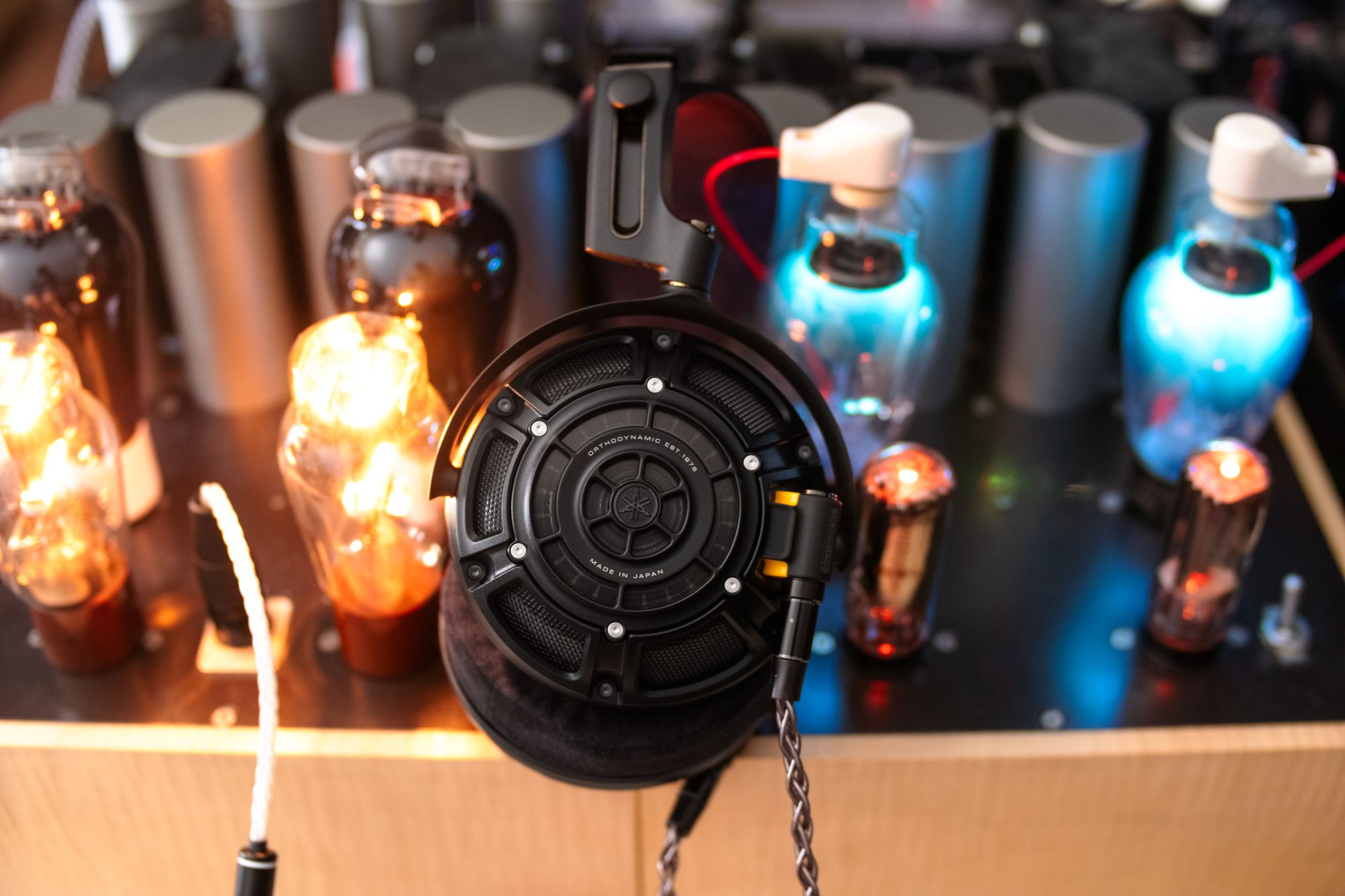
"Orthodynamic"
"Orthodynamic" is the name that Yamaha has given their particular type of planar magnetic driver. Most modern planar magnetic headphone drivers use bar magnets, but prior to the YH-5000SE's release, there were already two mainstream exceptions (and a few less mainstream exceptions like MyST and OPPO) .
Final Audio's D8000 line use a somewhat different magnet design, using circular magnets:

Meze Audio's Empyrean and Elite use an interesting hybrid design by Rinaro, incorporating both traditional switchback traces and circular traces:

The theory behind circular traces rather than switchback ones, according to Yamaha's marketing material, is that the center pin combined with edge mounts help with bass resonance as the driver is being damped in two discrete opposing areas at every point while still allowing for every point between the edge and center to excurse. Additionally, Yamaha's version of the Orthodynamic design in which the voice coil/trace is mounted directly on the diaphragm reduces sound transmission loss, meaning energy isn't being transferred to the "white space" of a diaphragm, something that Yamaha of the past may argue is not being achieved with the Rinaro/Meze or Final Audio, since the trace is suspended in a mylar diaphragm.
As shown in this photo taken from the Yamaha brochure, thanks to the WayBack Machine archiving Wikiphonia:

The core design philosophy of the HP/YH series is its center pin fixing axel, circular trace, and full voice coil diaphragm.
For the YH-5000SE, it appears Yamaha attempted to stay true to the designs of the 70s, to some extent:

One key difference is that the YH-5000SE uses a thinner film diaphragm with traces etched onto it, with more corrugations. These corrugations allow the YH-5000SE's driver to visibly excurse when playing music. This may theoretically lead to a more dynamic sound than other planar magnetic headphones due to a greater Cms/compliance: the driver offers less resistance to movement than typical planar magnetic drivers which may give the impression of a more "dynamic" sound. Maybe. Many "dynamic" sounding headphones like the Focal Utopia and Fostex TH900 also have a large Cms/speaker compliance due to the combination of a stiff diaphragm and compliant surround. The greater movement of the driver may be related to why the Utopia and TH900 sound dynamic, but without proof, this may just be a correlation rather than a causation.
Build
The YH-5000SE with its lightweight magnesium frame is one of the most comfortable headphones I’ve ever used, losing only to the Audio Technica ADX5000 and Sony MA900—both of which weigh almost nothing with their own magnesium frames. The headband distributes what little weight the YH-5000SE does have quite well, and the microsuede pads never got warm on my head. The leather pads did occasionally make me sweat, but I didn’t care to use them much anyway, as I preferred the sound with the microsuede pads.
The YH-5000SE’s cable uses recessed 3.5mm connectors which appear to help with durability, but I tend to prefer locking connectors like mini-XLR or LEMO (as used in the Sennheiser HD800, Focal Utopia, and Campfire Audio Cascade). I had a couple incidents where the plugs accidentally came out with less effort than I’d find acceptable for such an expensive headphone.
Sound
Unlike most reviews I write, I want to start by posting the measurements on my KB501 clone pinna:



Additionally, we now have B&K 5128 measurements of the YH5000SE:

As it is easy to see, this headphone is not really a headphone that can be blindly recommended. It's quite target-deviant, which does not necessarily mean it's a bad headphone, it's just going to be more hit or miss to people's preferences than the average headphone. Those that only care about how a headphone measures need not apply for the rest of this review, but since I already spent the money buying this, I wanted to dive deeper into seeing what, if anything, makes the YH-5000SE worth the effort for Yamaha to bring back the Orthodynamic name after decades of leaving it in the vault.
In short, the YH-5000SE was better in my system, but not enough to save it. Something like the YH-5000SE is difficult to write about as it's a headphone that absolutely does not try to be target-compliant on purpose. This is fine, as there are plenty of headphones that are not target-compliant that still manage to reel me in, like the ZMF Caldera, or Audeze LCD-4, or the Focal Utopia. Still, this is on another level of target-deviant from those headphones. That is not necessarily a nail in the coffin, but I would still heavily recommend anyone that is still interested in the YH-5000SE after reading this review try to hear it for themselves before spending the money on this headphone.
Associated Equipment
In the course of my ownership of the YH-5000SE, my system has changed rather substantially. I’ve used several different amplifiers with the YH-5000SE, including my darTZeel NHB-108 clone, Eddie Current Zana Deux SE, Fiio Q7, Neurochrome DG300B, Questyle CMA800R, Schiit Magni Piety, Luxman L550A, and a custom Oliver Sayes 300B+801A amp. However, at the time of this review, I found the YH-5000SE paired best with the following setup, which is my current reference setup:
PC USB->Accurate Audio B660 DDC->Exogal Comet Plus->Oliver Sayes Type 26 TVC Preamp->Esoteric A-100 with an transformer adapter
The Esoteric A-100 is a push-pull KT88 based tube amp, but like many push-pull amplifiers, it doesn’t sound nearly as warm as my 300B amps or a Bottlehead Crack, for example. In fact, the Piety, CMA800R, and darTZeel clone all sound noticeably warmer. Only the Fiio Q7, with its THX-based amp stage, sounds leaner than the Esoteric.
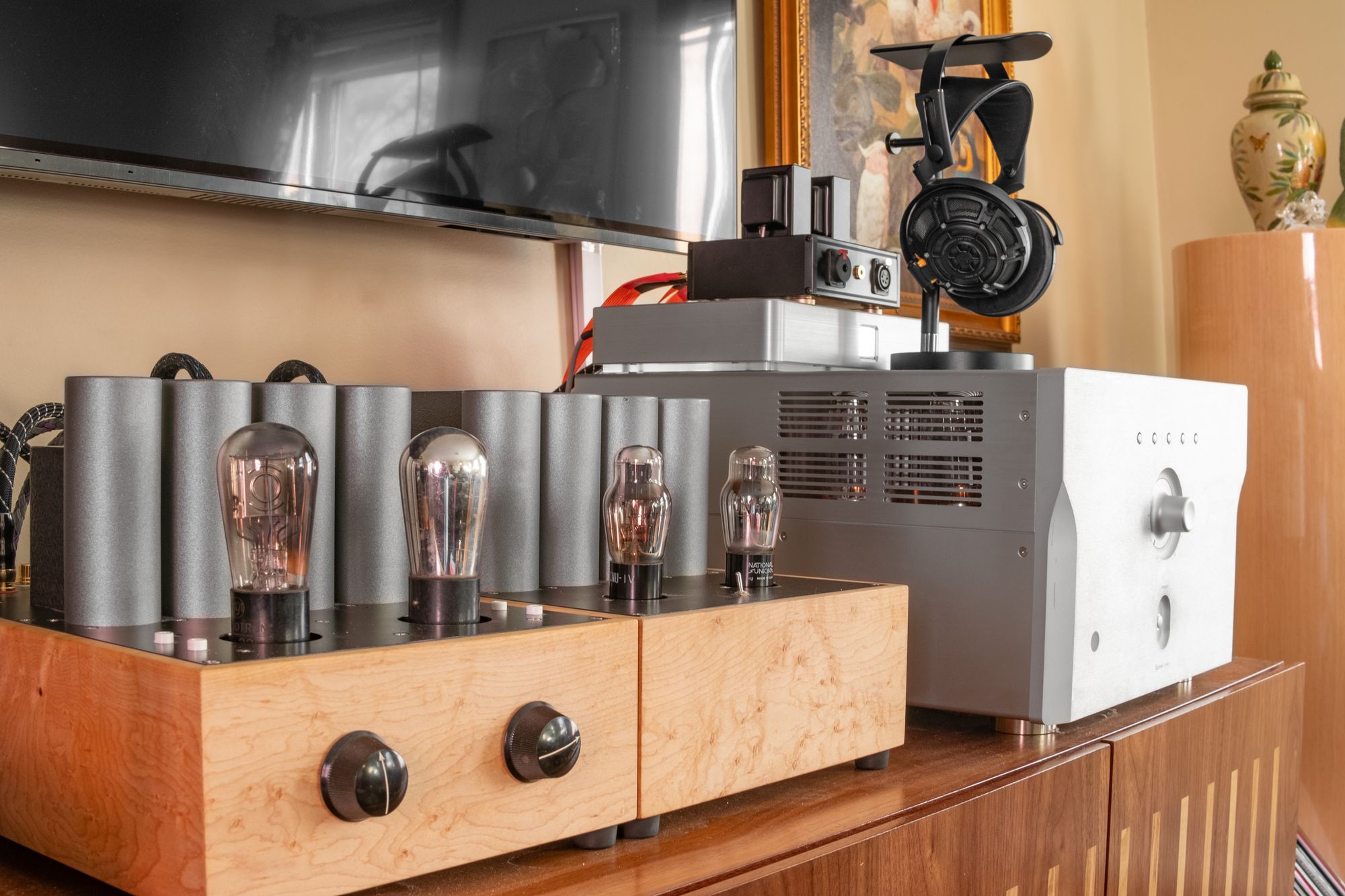
Bass
According to the designers of the YH-5000SE, even order distortion was built into the headphone to simulate the idea of the warmth of a tube amp. In theory, this should be fine, especially since humans are pretty bad at actually hearing distortion in headphones. However, even with my beefiest amps, the YH-5000SE sounded just past the border of muddy. The Esoteric amp I felt flattered the YH-5000SE most is a tube amp, but I’ve experienced it tighten the bass of everything I’ve plugged into it, whether it be my Lii Audio Silver 10 speakers, a Sennheiser HD580, ZMF Caldera, or the Sony MDR-R10. The mid bass hump that was tuned into the YH-5000SE is very out of the ordinary for a planar magnetic headphone.
Some planar magnetic headphones do have perceived elevated bass, but generally, these are closed headphones that accomplish this by tuning low midrange dips combined with center or upper midrange rises. With this low midrange dip, bass is more noticeable due to the delta between bass and “warmth” in low midrange. By taking a chunk of low midrange out, midrange sounds lean, almost cold, which opens the stage for bass to sound elevated in comparison. This behavior appears to be a hallmark of many closed planar magnetic headphones’ tuning, as shown in the Audeze LCD-XC, Hifiman Audivina, and Meze Audio Liric, respectively:

However, the YH-5000SE clearly does not employ this technique, as it could barely be more open. Instead, Yamaha appears to have moved fs (resonant frequency) to around 65Hz when coupled with the flat plate of my GRAS clone rig:

Initially I was worried I was not creating a seal, as this impedance hump behavior is more typical of a dynamic headphone, like my Sennheiser HD580 for example:

I then tested the ZMF Caldera with and without a seal as a sanity check to ensure I wasn't doing anything incorrectly:


And indeed, the Caldera's impedance curve is basically flat when coupled, and shows a mild hump when uncoupled.
So, I ran the test again with the YH-5000SE, including a measurement with the YH-5000SE uncoupled from the rig:


The YH-5000SE's uncoupled behavior mirrors uncoupled behavior of other headphones, so it appears that this is intentional. My best guess as to why Yamaha employed this is that they wanted to make a headphone with the benefits they derive from planar magnetic headphones without actually abiding by the typical planar magnetic headphone formula.
A typical planar magnetic headphone has a sealed front baffle to create a pressure differential between the driver and the air. Then, the listener's head couples with a, usually, sealed pad to create a pressurized chamber and increase the stiffness of the driver. This moves the resonant frequency of the driver downward. When the seal is broken, the driver moves more freely and the resonant frequency moves higher up the frequency band. This seal is the reason most planar magnetic headphones extend in bass to subterranean frequencies.
However, the YH-5000SE does not do that. The YH-5000SE's baffle is actually much like the Sennheiser HD800's baffle in that it is quite porous. This means that the YH-5000SE barely moves its resonant frequency down when coupled to the head, and that creates the bass hump shown on measurements.
The YH-5000SE's impedance naturally led me to wonder how it would change with varying output impedance, which I was able to measure:

The difference between a <1 ohm output impedance and 300 ohm output impedance in the bass was less than 3dB, but I did find that anything past 20 ohms was uncomfortably muddy.
The bass otherwise did not bother me in general listening though, especially because there were more glaring issues….
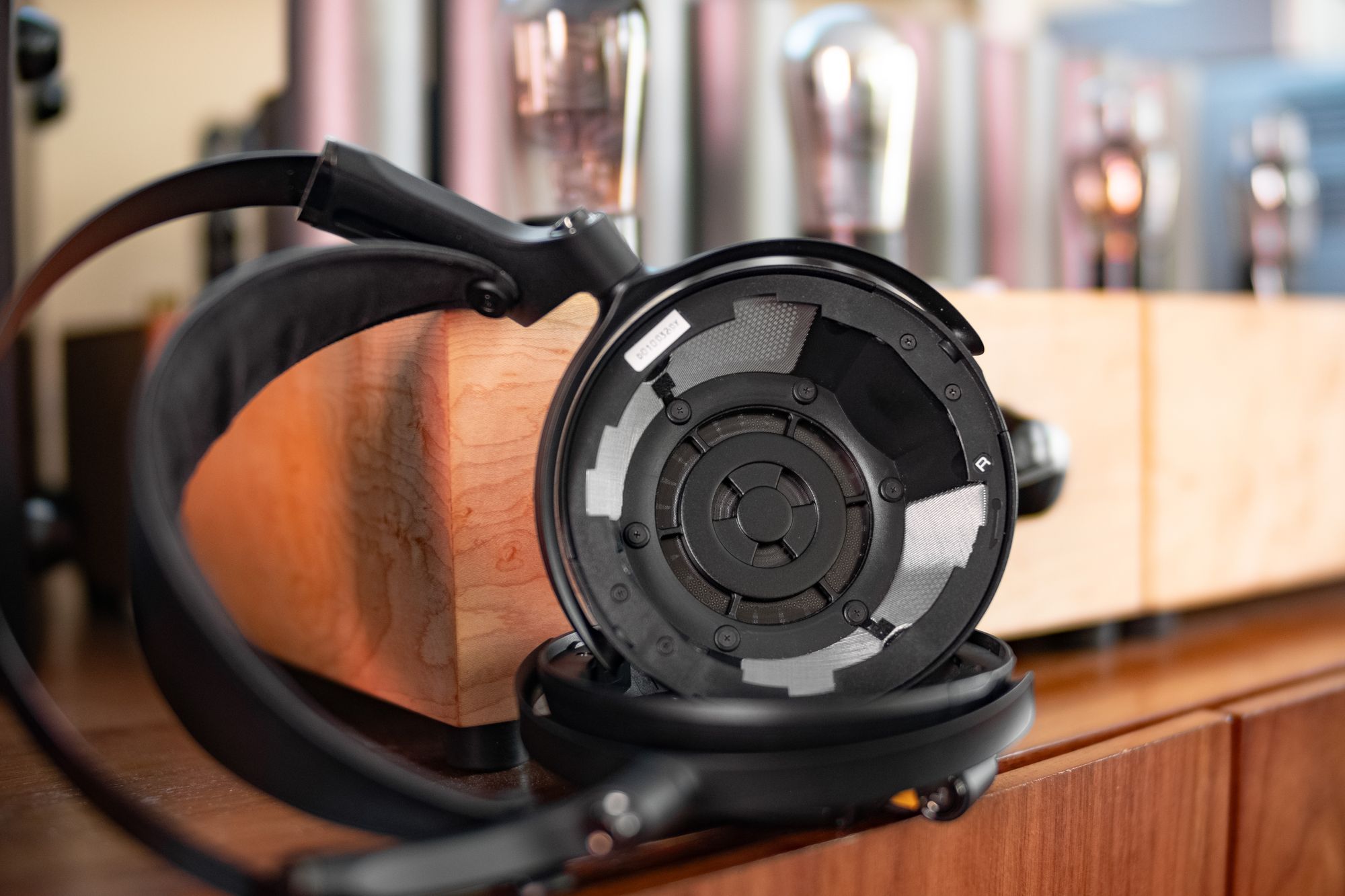
Midrange
While the tuning decisions of the YH-5000SE’s bass may be abnormal, it generally didn’t sound quite unlike the experience many get with open dynamic driver headphones with its elevated mid bass and rolled off sub bass. The midrange, however, is a completely different story. The kindest way I can describe the YH-5000SE’s midrange is, “unique.” Depending on the pads, it has a very narrow Q rise of either ~5dB or ~8dB between 1-1.5kHz. This yields a sound that I perceive to be quite shouty. This is combined with a dip in the upper midrange beyond what would be “flat” without pinna gain. When combined with the shouty 1-1.5kHz, it sounds, frankly, like a playing a phone speaker into a cave. The first time I heard the YH-5000SE, I couldn’t believe that this was the sound with which Yamaha intended to bring back the Orthodynamic name. I’ve delayed this review for months because I could not reconcile the overwhelmingly positive reviews I’ve read from publications with what I heard between two totally different units. I’ve listened to this headphone for longer than almost any other headphone I’ve used before writing about it. In fact, the only reason I finally feel comfortable finishing this review is because I think I’ve heard a headphone that nails what I think is possible with this general tuning decision: the Sony MDR-R10.
The R10 has a vaguely similar tuning, but has some very key differences. The R10’s midrange rise has a wider Q: between 1-3kHz compared to the YH-5000SE’s 1-1.5kHz peak. The R10 also dips much later, between 3-5kHz compared to the YH-5000SE’s largest dip between 2-4kHz. But the R10 immediately sounded magical to me despite the tuning decisions. The R10 is not a “technical monster” by any means. Frankly, I don’t know if it even surpasses my $200 HD580 in technical ability. This is not the fatal blow to the R10 that it appears to be though, because the R10's strengths lie elsewhere. It creates a colored sound in which the “flaws” work together to create one cohesive, unique presentation that I wish were replicated in a more accessible package.
The R10’s closed cup seems to be designed in a way that allows for sound to reflect just in time to avoid sounding echoey and instead, works to create this wet, dense sound with lengthened decay. This is combined with a forward center midrange to bring vocals and instruments forward to give a sense of intimacy, building on the foundation the wet low midrange gives. Then, the comparatively lower Q upper midrange dip pushes stage and harmonics behind the center midrange to give the sensation that the singer or instrument is right in your face. The result is an absolutely beautifully colored and enveloping sound that, while very genre specific, is the closest any piece of audio equipment has brought me to tears. The phrase, “smooth,” is often used as a review-friendly analog to “smeared” or lacking detail, but I can’t think of a better way to describe the R10’s sound—decay is like butter and while timbre isn’t perfect, in large part due to the colorations to the midrange, really nails down to me why target adherence isn’t the only thing I look for in a headphone. If a headphone can convey its own unique sound in a way that augments feeling and emotion in music, that is more valuable to me than target adherence.
In contrast, the YH-5000SE just sounds…confused. It overshoots all the ideas that allow the R10’s tuning to make sense to me. I mentioned earlier in this review that I prefer the microfiber pads to the leather pads, and measurements do align with why I’ve left the leather pads in its box. I find the midrange with the suede pads to be too shouty even as a Grado lover, but the leather pads push this idea way, way too far for me. I tend to be a harsh reviewer because I like people to understand what they’re getting into before purchasing something. I have a long list of headphones that I like, but my preferences should play a minimal role in the recommendation of a headphone because, frankly, some of my preferences are weird. Most of my recommendations err towards the safe, if boring, side because the average person is more likely to enjoy an HD650 than, for example, an Audio Technica AD2000.
It’s been quite clear throughout this review that this headphone is not only relatively difficult to recommend due to price, but also in tuning. Midrange is the heart of many, many music genres, and a difficult-to-grasp midrange makes it hard to recommend a headphone. While I have misgivings with the midrange tuning of many headphones, it’s rare that a transducer is so bizarrely tuned that I need to specifically seek out music that works with it, but I think I’ve found a single genre of music in which the YH-5000SE’s music almost works in its favor: shamisen-heavy music like music from Yoshida Brothers. The peaky 1-1.5k makes the plucks of the shamisen sound aggressive and driven, almost like an electric guitar, but with more flavor. I started to see shades of magnificence, as the peaks and compliant driver seem to almost give a visceral presentation of the shamisen. It's probably the best I've heard shamisens in any headphone. I noticed similar behavior with nylon string guitars, but the timbre sounds too off for me to really enjoy the novelty. The narrow Q of the 1-1.5k peak emphasizes the initial attack and stark upper midrange dip veils everything after that, so they instead sound like they're playing from behind a curtain.
Treble
I do not like the YH-5000SE’s treble. It sounds gritty and unrefined. Cymbals have a distinct "jagged" decay compared to any other headphone I've used as a sanity check. Additionally, the dip between 2-5kHz makes the low treble and mid treble (6-12kHz) sound elevated in comparison, and fatigued me faster than any Hifiman planar magnetic headphone ever has. It doesn't have the overboosted air to give the perception of openness, but I almost wonder if that would have helped to make the low-mid treble elevation sound less jarring.
Techs
Soundstage sounds confused--with a very forward center midrange and very recessed upper midrange, it's difficult to place instruments well in the stage because the fundamental sounds rather upfront, but the decay sounds more recessed than it should, giving the impression that the instrument is somehow both close and distant. I found it easier to not pay attention to staging and imaging when listening to music with the YH-5000SE. Fine details were similarly difficult to parse, and the midrange is so wonky that it was almost impossible for me to discern between specificities of instruments. A normally dark Buffet Super Dynaction saxophone sounded almost as tinny as a bad student horn.
Volume Limit
This little blurb deserves its own section: the YH-5000SE is not meant to be played loudly. Not in a vague, "it performs better at quiet volumes," way, but the diaphragm will literally hit the front driver grill at levels above around 90dBA. Loud listeners need not apply.
Comparisons
It makes sense to me to compare the YH-5000SE to other multi-kilobuck planar magnetic headphones, as those likely are what will be cross-shopped. While I don't have a Hifiman Susvara to directly compare to, I don't think they're very comparable anyway--the Susvara sounds too "clean" in comparison. They target different listeners. While the Susvara is best for those who want to extract as much information from a song as possible, the YH-5000SE's seems to target a more "right brained" consumer. Thus, I felt it would be more apt to compare to the ZMF Caldera, my favorite of the modern planar magnetic headphones, and the Abyss Diana TC: the moderately more approachable of the two Abyss headphones. I also felt comparing the modern YH-5000SE to Yamaha's original mainline Orthodynamics was a necessity.

Abyss Diana TC
I briefly heard the Diana TC at CanJam this year and my main takeaway was, "Beyerdynamic DT880 but more expensive and worse." After buying a pair for myself, my opinion unfortunately didn't change much. I bent the life out of the headband so I was able to get a seal and while I was able to get bass extension, the Diana TC never clicked with me and, in fact, encapsulates everything that sounds wrong to me about the "planar sound." It's thin to an unnatural degree, incredibly shouty and nasal upper midrange, and piercingly uneven in treble. While the YH-5000SE is jarring at first listen, I vaguely understood and appreciated what it's trying to do. The Diana TC, in contrast, only annoyed me the more I used it. I understand what it's trying to do, but it sounds "hi-fi" in a way that is meant to impress at first listen by deluging the listener in treble to make them believe it's detailed but in actuality, sounds barely more technically capable than a $109 Hifiman HE400SE.

The YH-5000SE and Diana TC trade eccentricities. I do need to preface that treble measurements on my rig should be taken with a grain of salt, but that honestly works in the Diana's favor, as I find the treble to be much more piercing than measurements may indicate. I truly found them unpleasant to listen to music with. The YH-5000SE's bass is both more elevated and less clean, but the Diana TC's bass, even with proper seal, didn't sound that much cleaner. Midrange on the YH-5000SE was more unnatural overall, but I found more moments of glory with the YH-5000SE than the Diana TC, which I thought sounded wrong with everything.
ZMF Caldera
The ZMF Caldera is my favorite in-production planar magnetic headphone, but I do recognize that may be a controversial opinion. The Caldera, in contrast to the Diana TC, is the least "planar-sounding" planar magnetic headphone I've heard. Unlike most modern planar magnetic headphones, the Caldera has a sense of warmth in the low midrange, combined with decently perceivable decay. This is paired with an amount of treble I find to be quite sane in comparison to most other planar magnetic headphones. This, at first listen, may be perceived to be a less detailed headphone than, for example, the much brighter and leaner Hifiman Susvara, but I find it immensely more approachable for the average listener.
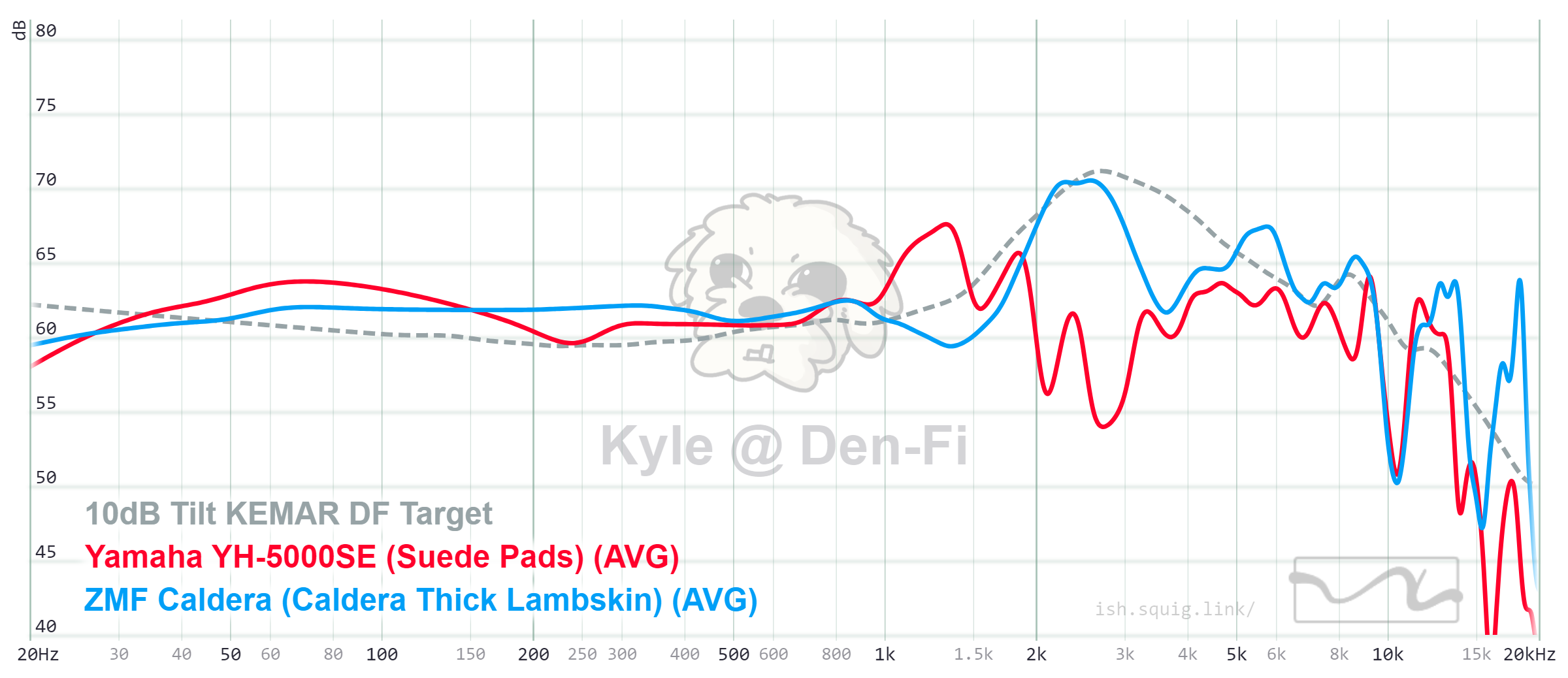
Now, neither of these adhere perfectly to target, but, as said earlier, for those looking for a headphone that adheres to target, buy this. The areas in which the Caldera doesn't quite adhere to target make sense to me within the scope of the goals of the Caldera to me: a headphone that combines warmth with a narrower Q "soundstage dip" than most planar magnetic headphones to create a relaxing experience. The YH-5000SE, in contrast. is a much more...interesting sounding headphone. When switching from the Caldera (or, frankly, pretty much any headphone) to the YH-5000SE, the YH-5000SE has a jarring tin-can sound. This is caused by the center midrange spike that leads into its massive pinna dip in the upper midrange. It's frankly unsettling to use the YH-5000SE after getting used to the sound of other transducers because it's so colored. Drums sound hollow, steel string guitars sound like they use nylon strings, and so on.
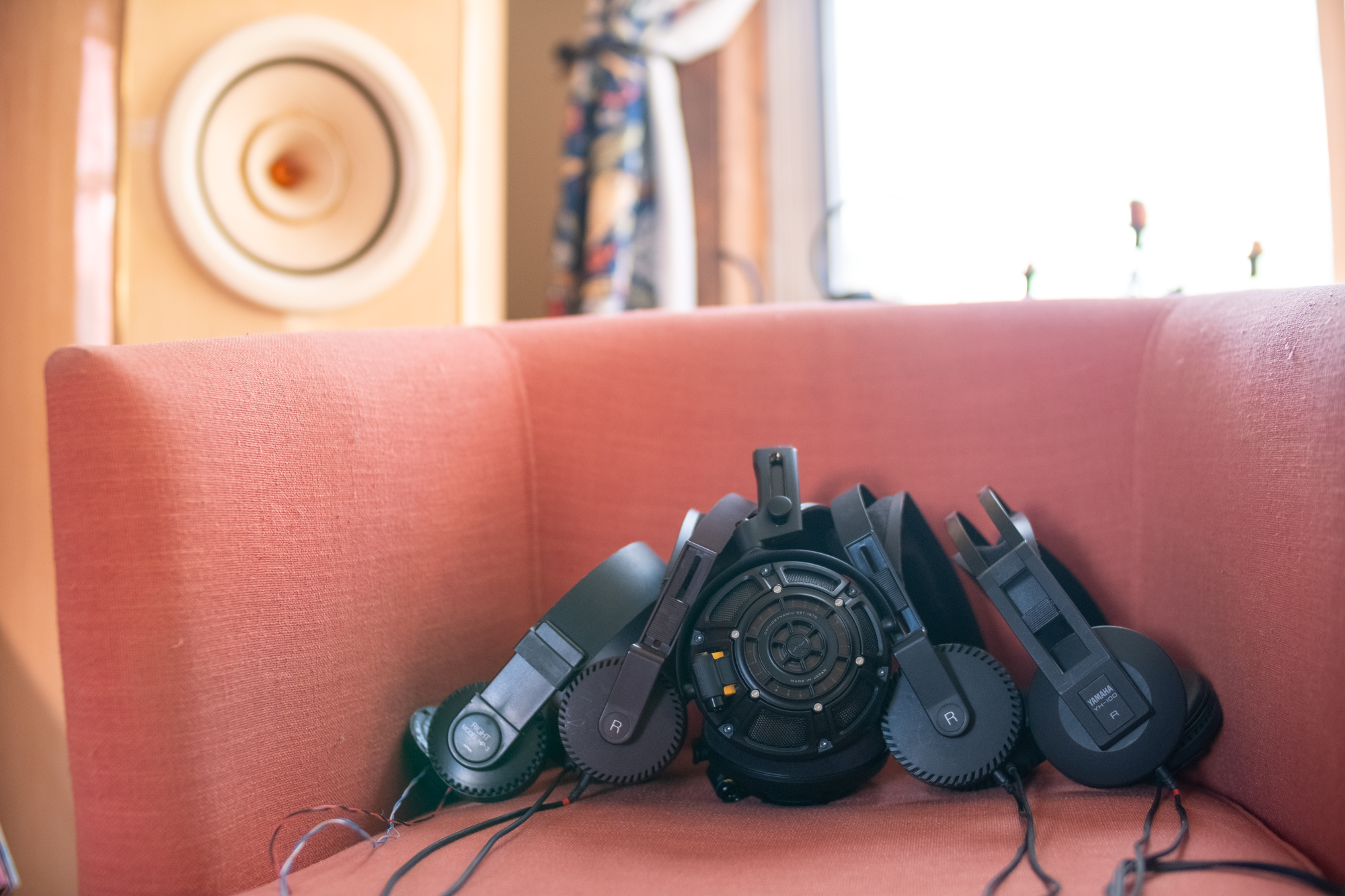
Yamaha HP-3, HP-2, HP-1, and YH100
Frankly, all of these sound much more "normal" than the YH-5000SE. For those looking for a pair after this review, the HP/YH naming scheme was not something I was able to fully find the history of, but the only difference I've been able to find is that some versions of the HP-1 had anisotropic ferrite magnets rather than isotropic magnets. Anisotropic magnets are able to hold stronger magneticism and it's generally claimed that the rarer anisotropic HP-1 sounds more controlled. My version is the much more common isotropic version. I've long held that the vintage Yamha Orthodynamics are my favorite-tuned planar magnetic headphones, and the measurements align with why I perceive them as more generally acceptable than modern planar magnetic headphones:

The "higher end" YH-100 has always been my least favorite of the Yamahas in stock configuration due to its weirder sound and perception of ringing, but even that sounds a little cleaner than the YH-5000SE overall. The YH-5000SE does have more bass than any of the older Yamahas, but it sounded muddier to me than any of its older siblings.
The HP-3 I own is modified with fairly simple methods, but I've routinely seen them sell on eBay for less than $50, which, even stock, is perhaps the greatest bargain in audio. Seriously, buy a pair. It's the dullest of all the Yamahas stock, but I actually think the YH-5000SE sounds a little grainier than the HP-3.
The HP-2 suffers from middle child syndrome in the current market; it uses smaller and weaker magnets than the HP-1 but is rarely significantly cheaper than the HP-1. Still, it comes in a pretty burgundy color, sounds a little brighter than the HP-3, and fits my head more comfortably than the HP-3. At this point, comparing directly to the YH-5000SE felt ridiculous.
The HP-1 is my favorite of the original lineup, and, even in the late 70s, managed to adhere quite well to target:
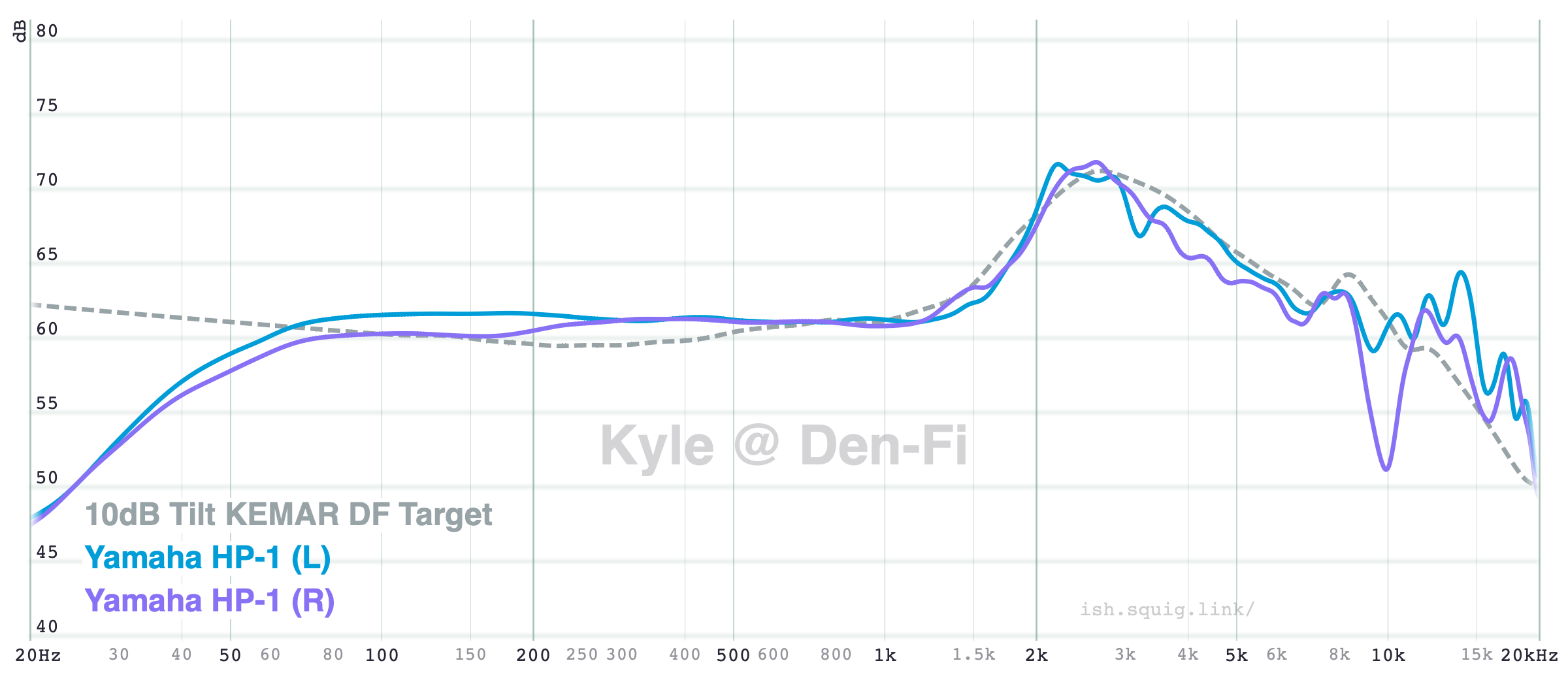
On my head, the bass extends a bit further than on my rig as the flat supraaural pads fit my ears quite well. It lacks a bit of air up top for me and occasionally sounds congested, but it's an immediately approachable sound that I wish Yamaha could revive alongside the YH-5000SE's unique tuning. The HP-1 is the reason I was so excited to hear the YH-5000SE, and the reason I'm so disappointed by it.
Conclusion
This headphone is the equivalent of durian to me--a weird novelty that I sometimes like, but stomaching the initial impression of its scent is challenging. After nine months of ownership and ten months since my first listen, my opinion of the YH-5000SE has improved...slightly. I still think it's a headphone that is impossible to recommend to most people without a home demo as it just sounds too weird with the vast majority of music, but I respect that Yamaha has attempted to try new things with the YH-5000SE instead of making a generic-sounding planar magnetic headphone. As I'm using the YH-5000SE now, listening to Hiromitsu Agatsuma, I have to lament that this is not the HP-1 successor I was hoping for. I, frankly, am excited to list this headphone for sale after touring it with some friends. I do appreciate the fact that the YH-5000SE has forced me to try to understand what the engineers at Yamaha were trying to do, rather than lazily claim they don't know what they are doing because I don't like the sound of it or because it doesn't measure close to a target. It's made me a better listener, in its own weird way.
As for me, I'll stick to the Orthodynamic Roundup.
Comments?
Leave us your opinion.